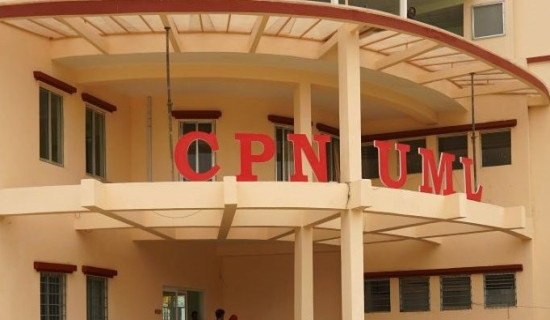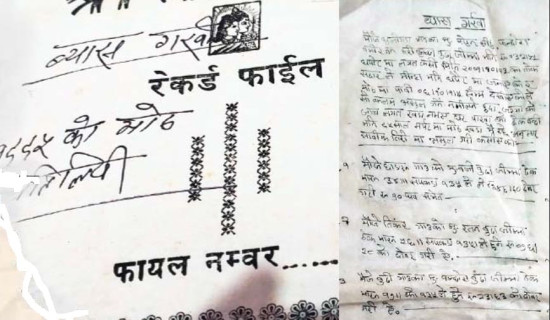- Thursday, 4 September 2025
Jute farming declines
By Hari Prasad Koirala,Urlabari, Sept. 4: Jute farming in Morang district is witnessing a steady decline as farmers lose interest due to the absence of modern agricultural technology and the withdrawal of government support and subsidies.
Over the past three years, not only has the land area dedicated to jute cultivation (locally known as sanpat) decreased, but the overall production has also remained unsatisfactory.
Farmers have been facing significant difficulties in storing jute, which prevents them from benefiting from seasonal price hikes.
Chaitulal Rajbanshi of Pathari-Shanishchare Ward-5 shared his experience: “Last year, I cultivated jute on 2.5 katthas of land and sold it around the 21st or 22nd of Bhadra (early September). By October, the price had surged by Rs. 500 per man (40 kgs).”
Despite cultivating the same amount this year, Rajbanshi informed that although self-labour yields better profits, the lack of storage means farmers often miss out on peak market prices.
Another farmer, Mohammad Akram, reported even greater losses. He sold his jute at Rs. 3,600 per man last year, but prices shot up to Rs. 4,700 once most farmers had already sold off their stock.
Last year, jute prices reached as high as Rs. 4,900 per man. However, despite lucrative prices, the increasing shortage of agricultural labour has contributed to declining interest in jute farming.
According to Deepa Dev, head of the Agriculture Knowledge Centre, Morang saw jute cultivation in 5,110 hectares in the fiscal year 2022/23, producing 7,409 metric tonnes of jute.
Although the area expanded slightly to 5,125 hectares in 2023/24, the yield only increased by 22 metric tonnes. In the latest fiscal year, cultivated area dropped to 5,050 hectares, with production falling to 7,322 metric tonnes.
The Centre predicts that jute cultivation will shrink further this year.
Until fiscal year 2023/24, the government had been offering subsidies under a jute farming promotion programme.
Thirty farmers cultivating more than 10 katthas each were provided Rs. 20,000 each. However, the discontinuation of this subsidy has raised farmers' production costs, causing many to limit their farming area or abandon jute cultivation altogether, according to Dev.
Sitaram Sahani, a farmer from Sunbarshi Municipality-8, informed that he now grows jute on just 5–6 katthas, mainly to meet his household fuel needs. After extracting the fibre, the remaining jute stalks are commonly used as firewood in the Tarai region.
This year, many farmers in Morang are cultivating jute on a small scale, primarily for household use or local markets.
Those who once farmed jute on a large scale, measured in bighas, have significantly reduced their operations. Without government support, they say, the costs have become unmanageable.





-square-thumb.jpg)










